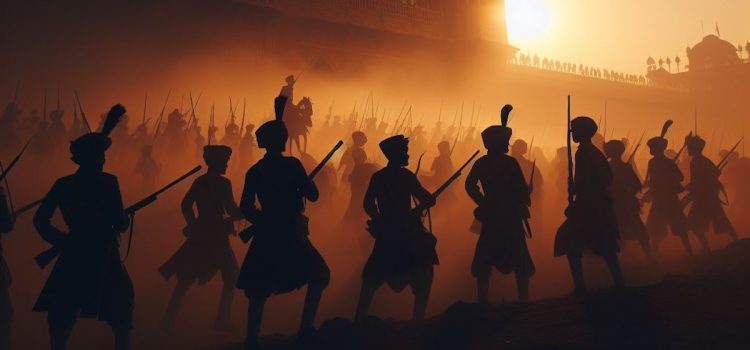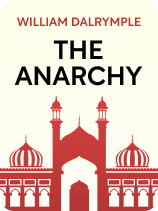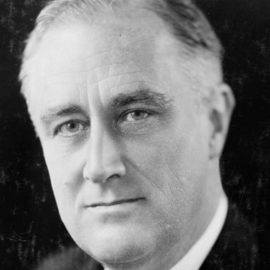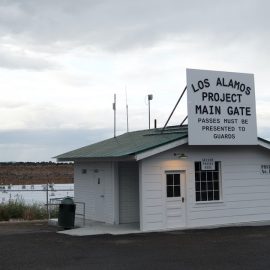

This article is an excerpt from the Shortform book guide to "The Anarchy" by William Dalrymple. Shortform has the world's best summaries and analyses of books you should be reading.
Like this article? Sign up for a free trial here.
Who won the Anglo-Maratha wars? What factors made a difference in the outcome?
After setting up in Bengal, the East India Company (EIC) extended its influence over the broader stage of regional powers competing for control. The EIC gained prominence in the Indian subcontinent by engaging in wars against two significant powers: the Mysore Sultanate and the Maratha Confederacy.
Let’s look at a brief history of the Anglo-Maratha wars.
The Anglo-Maratha Wars (1775-1803)
One of the ways the East India Company (EIC) established its rule in India was by waging war against the Marathas, a powerful confederacy of Hindu kingdoms based in western India. Dalrymple explains that the Maratha rebellions had been the greatest contributors to the Mughals’ downfall and that much of the former Mughal empire, including the capital of Delhi, now lay in their hands.
The Anglo-Maratha wars began with EIC’s first attempt to conquer the Marathas, which resulted in a decisive British defeat and the full return of captured territories in 1782. However, in its conquest of the Mysore Sultanate, the EIC acquired the resources to challenge the Marathas a second time. The company declared war on the Maratha Confederacy in 1803, led by Governor Richard Wellesley, his younger brother Arthur Wellesley, and General Gerard Lake.
(Shortform note: The Maratha nation was born out of organized Hindu resistance to Mughal rule. The lord Shivaji formally founded the nation on India’s west coast in 1674, after spending much of his life waging guerilla warfare against the Mughal emperor Aurangzeb. After thwarting a Mughal attempt to reconquer their lands, the Marathas began successfully seizing Mughal territory. They struck a fatal blow against the Mughal empire’s power at the battle of Malwa (central northern India) in 1705, precipitating the collapse of the empire. Afterward, Maratha territory grew to over 380,000 square miles, and much of modern partitioned India is former Maratha territory.)
Dalrymple identifies three major factors that determined the course of the conflict.
- Division: At the conflict’s outset, the Marathas had fallen into a bitter civil war and thus couldn’t challenge the British with a united front. The EIC then stoked these divisions, signing a treaty with one of the weaker factions to further divide the alliance.
- Technology: The British continued implementing new military technologies. For example, they began using “galloper guns”—horse-drawn artillery that could move into position faster than conventional cannons.
- Finances: Many of India’s biggest money-lending families began backing the company over the Marathas because of its large collateral and record of repayment. The EIC leveraged this capital to bribe the Marathas’ French and Arab mercenaries into abandoning their posts, surrendering forts, and even joining the EIC army.
With these advantages, the EIC marched on Delhi and captured it from the Marathas. Dalrymple argues that this was the turning point in the war. Though the Marathas would continue resisting, the fall of Delhi established the EIC as the dominant power in the region.
| How Internal Division, Technology, and Finances Determine the Outcomes of War Most military analysts would agree that division, technology, and finances are key factors in determining the outcomes of war. However, a close look at some of the general theories can flesh out the specific roles they may have played in the conflict between the EIC and the Marathas. Division: Dalrymple emphasizes the role that division played in preventing the Marathas from mobilizing a larger force to oppose the British. However, unity and division also play a critical role in coordination between allies. The civil war and distrust between the Maratha factions may have prevented them from coordinating their troops more effectively. Technology: Dalrymple specifically highlights the role of artillery in this conflict. However, technology also plays an incredibly important role in military logistics. Standardization of equipment, preservation of food, storage facilities, map-making, and record-keeping are all essential to keeping a military force in fighting shape. Finances: While Dalrymple foregrounds the way the EIC leveraged its financial resources to bribe mercenaries, the biggest advantage of financial superiority is good supply lines. By investing more in the production of ammunition, food, clothing, and medical supplies, financial resources directly contribute to military effectiveness. |

———End of Preview———
Like what you just read? Read the rest of the world's best book summary and analysis of William Dalrymple's "The Anarchy" at Shortform.
Here's what you'll find in our full The Anarchy summary:
- The rise of the English East India Company during the 17th and 18th centuries
- How a trading company came to rule most of the Indian subcontinent
- The background, historical context, and fallout from the events in the book






